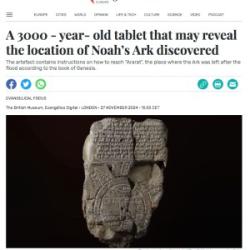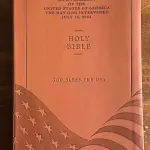My first up-close and personal encounter with the dominionists came back during the days I was working for Ron Sider, the Mennonite theologian and activist best known as author of the book Rich Christians in an Age of Hunger.
That book, first published in 1977, lays out the massive biblical case for economic justice and radical generosity. The core of the book is an argument for what Sider calls a “graduated tithe” — a way of committing to and structuring voluntary, individual sharing.
The religious right went ape-skata over that book, attacking it as some kind of statist, Stalinist manifesto. Just how a call for voluntary, individual generosity was supposed to entail Communism they were never able to explain, but just because their anger was incoherent didn’t restrain their indignation at Sider’s calls for the rich (that’s us) to share more with the poor (that’s the half of the world somehow getting by on less than $2 a day).
The reaction against Rich Christians was particularly vehement among the theonomist or reconstructionist writers and those who followed them. This was a small but prolific and vocal fringe group of radical southern Presbyterians who advocated Christian dominion and “Christocracy.” Specifically, theonomists argue that Mosaic law is the template for all civil law, in all times and cultures. As Greg Bahnsen decribed it in his book Theonomy in Christian Ethics, this means:
The civil precepts of the Old Testament (standing “judicial” laws) are a model of perfect social justice for all cultures, even in the punishment of criminals. Outside of those areas where God’s law prescribes their intervention and application of penal redress, civil rulers are not authorized to legislate or use coercion (e.g., the economic marketplace).
You may notice that Bahnsen, like all theonomists, is rather suspiciously selective in what he chooses to keep from Mosaic law and what he chooses to ignore utterly.
The reason the theonomists hated Sider and his book was that it included a lengthy discussion of the many ways the laws of the Hebrew scriptures established and enforced economic justice. Unlike the theonomists, Sider was not calling for a hamfistedly literal application of the laws of Moses, but he surveyed its vast teaching on wealth, property, possessions and economic justice as part of his marshaling of such general principles found throughout the Hebrew and Christian scriptures.
The starting point for this Mosaic law on economic justice was an equitable distribution of land — the primary form of wealth and the main means of production in the Israelites’ agricultural society. That equitable distribution was sacrosanct and unchanging — as illustrated by the many condemnations of those who would “add land to land” or who would commit the abomination of moving a boundary stone. It was also reinforced by much later stories, such as that of Naboth’s vineyard and a handful of variations on that story and motif.
Under Moses’ law, land could be sold and purchased, but not in perpetuity. In the year of Jubilee, every 50 years, all property would revert back to the families that originally owned it. The Jubilee year also brought with it the forgiveness of all debts and the emancipation of all slaves (this was mainly debt-slavery, not American-style chattel slavery with its legal and religious blessing of torture, rape and kidnapping). Debts were also to be forgiven in the Sabbath years, which came every seven years.
Moses’ law also required two separate streams of tithing — one for the tabernacle or temple and one for the poor. This was not voluntary, but a mandatory and explicit redistribution of wealth. (Moses was way more of a statist than Sider ever dreamed of being.) In addition, there were a host of laws governing gleaning, harvesting and picking crops that forbade landowners from maximizing their harvests. Some of the grain, fruits and vegetables were required to be left in the field or on the vine so that they could be picked by the needy.
And on top of all that, the books of Moses are also filled with repeated blanket injunctions commanding everyone to be “open-handed” and to give freely and generously to the poor, to widows, orphans and strangers.
By highlighting all of that, Sider inadvertently shone a spotlight on the glaring hypocrisy of the theonomist’s self-serving selectivity when it came to Mosaic law. He didn’t mention them and his long discussion of Mosaic law was not in any way intended to have anything to do with them, but it happened, as a side-effect, to expose them as a bunch of dishonest, self-entitled buffoons and they did not enjoy that exposure.
So the theonomists went after Sider and his book with unchecked viciousness and dishonesty, most notably in David Chilton’s memorably named, but otherwise execrable piece of hack-work, Productive Christians in an Age of Guilt Manipulators.
(N.B.: For those who would maintain that the theonomists have never had any significant influence, I would point out here that one of their long-term aims has been to replace the words “rich” or “wealthy” with the more virtuous-sounding word “productive.” Judge for yourself, in 2011, whether or not their desired influence has been influential on that score.)
This didn’t seem like that big of a problem for Sider. Chilton’s hatchet-job was unreadable and the theonomists were regarded as kooky theocrats on the far-right fringe of evangelicalism, so did it really matter what they said?
Well, as it turns out, it did. Working for Sider, I got to trace what R.J. Neuhaus described as the “disproportionate” influence of these nutters and to appreciate firsthand his point that this fringe group was helping to shape the thinking of many Christians who had never heard of them and who would never imagine referring to themselves as “theonomists” or “reconstructionists” or “dominionists.”
The theonomist’s arguments were picked up and repeated — verbatim — by the cluster of influential southern-gothic Presbyterians, by the well-funded pseudo-libertarian and anti-environmental corporate front groups like the Acton Institute and the “Stewardship” councils and the various “Leadership” institutes of The Family (another influential group that dishonestly disavows its influence and, sometimes, even its own existence). From there these arguments were picked up and popularized by a host of columnists, reviewers, radio hosts and pundits. Tracing such arguments back to a source isn’t always easy, but in this case it was due to the outlandishly bizarre and distinctively quirky nature of the theonomists’ fabrications.
The small fringe group remained a small fringe group. No one else was rushing to join them or to identify themselves as converts to theonomy or dominion theology. But that didn’t matter, because those others were embracing the ideology and agenda of the theonomists.












